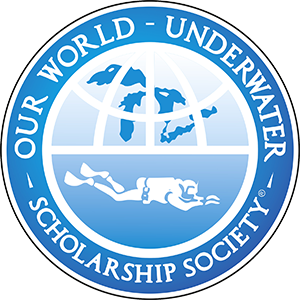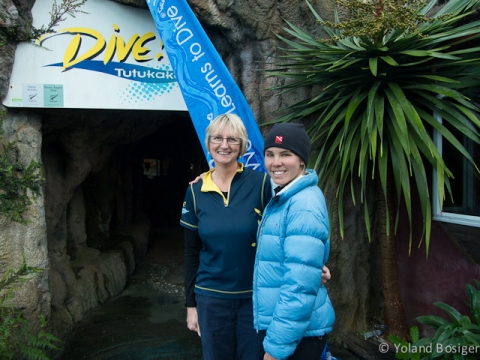Somewhere deep, deep down I think I have always been a bit of a warm tropical diving snob. It must be something about those clear exquisite waters, the incredible abundance of colourful coral and fish, and the occurrence of situations where you’re actually annoyed when the water temperatures drops below twenty-seven degrees, forcing you to don that three ml wetty. Sounds pretty terrible right? So I guess when I came to New Zealand I was super exited but somehow subconsciously unprepared for the true splendour that was awaiting me. Boy I couldn’t have been more mistaken about the Poor Knights!
To start with, the Poor Knight blew my cooler water stereotype to smithereens. They are stupendous, off-the radar amazing which is why of course they are well known as one of the best dive sites in the world! I truely think I did some of my best dives there and was very sad to have to leave after only two days.
I came and played at the Poor Knights with Dive Tutukaka and I can’t thank Kate Malcolm enough for inviting me. Turns out that Kate knew my previous employers Calypso Dive Charters really well, with Dive Tutukaka actually purchasing one of the boats I used to work on in Port Douglas. Definitely a small world out there!
My experience with Dive Tutukaka was fabulous. Dive Tutukaka are the longest running diving and sightseeing company in the Poor Knights and their experience was clearly evident during my visit. These guys run an extremely professional operation, have passionate and friendly staff, and offer brilliant diving experiences. Many thanks to crew members, Luke and Steve who successfully got us to and from the Knights and took me on some epic dives.
Okay so let me clarify. While the Poor Knights Islands do not experience temperatures in their high twenties, they do in fact receive some warmer water. The Poor Knights lie in the path of the East Auckland Current, which travels south past Australia and brings with it some unlikely tropical travellers (i.e. the Lord Howe Island Coral Fish). Located twenty-four km off the Tutukaka coast on the continental shelf, the Knights also receive nutrient-rich water providing an endless supply of food for filter feeders. The result: a distinct subtropical/temperate environment with over 125 species of fish and many different soft corals, sponges, anemones, and gorgonian fans.
The Poor Knights were made a total Marine Reserve in 1981 and as you can probably gather, for very good reason. The marine reserve extends for 800 metres offshore around the Poor Knights Islands providing a safe haven for marine life. The fish definitely seemed to know that they are protected and were not at all afraid to come close.
The Island’s volcanic origin also provides countless drop-offs, caves, arches, and tunnels to explore and discover. One of the coolest places I visited was Ricorico cave which, at 130 meters in length, 61 meters in depth, and 80 meters in width is the largest sea cave in the world! Luke and Steve both filled us in on the history of the cave including the amazing acoustics. This cave has been a natural auditorium for a long list of musical spectacles including Maori Haka challenges, opera singers, Swiss yodellers and didgeridoo players. How cool is that!
Blue Mao Mao arch was my favourite site and not too surprisingly really considering it was rated by Jacques Cousteau as one of his top dive sites! This place is teaming with so many fish that at times you can’t see the other divers in your group.
Thanks to Pete Mesley, Richard Brooks and Jayne Jenkins for helping with my photography and also especially to Pete Mesley for organising my stay in Tutukaka. After busting my cooler water stereotypes I cannot wait to do some more in future. Bring on Scandinavia!



















